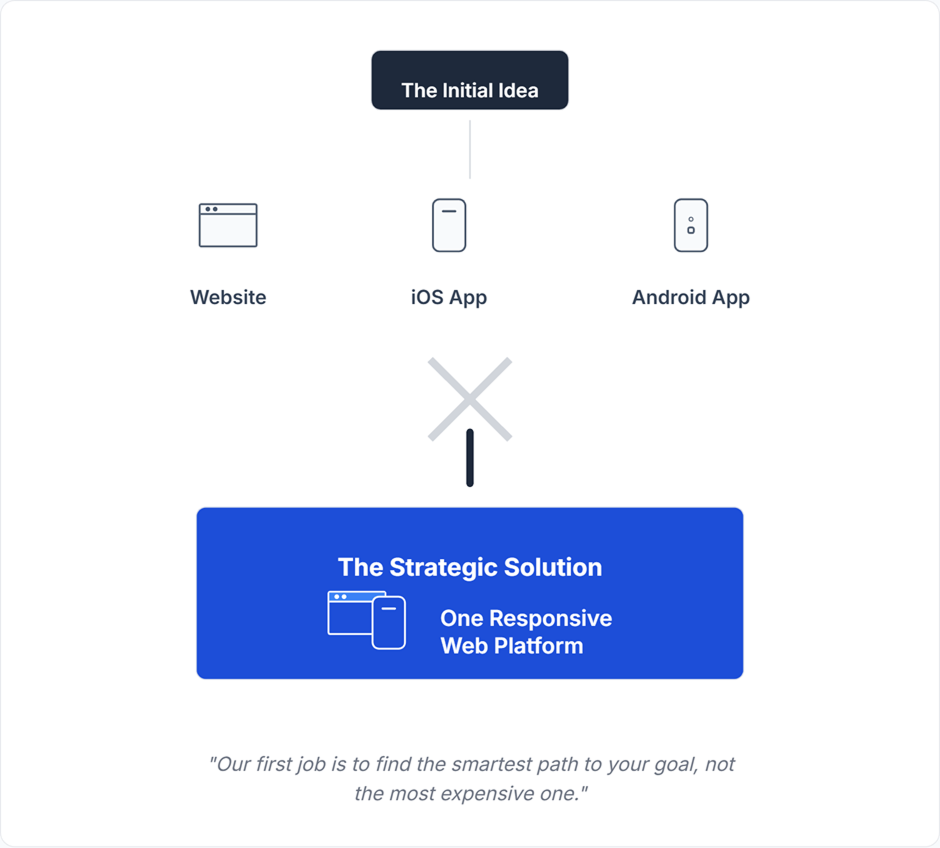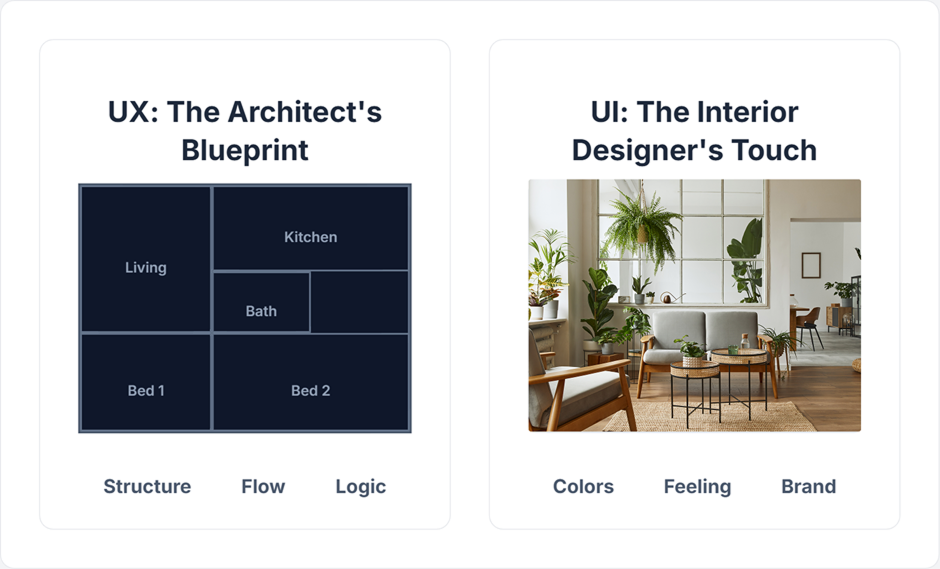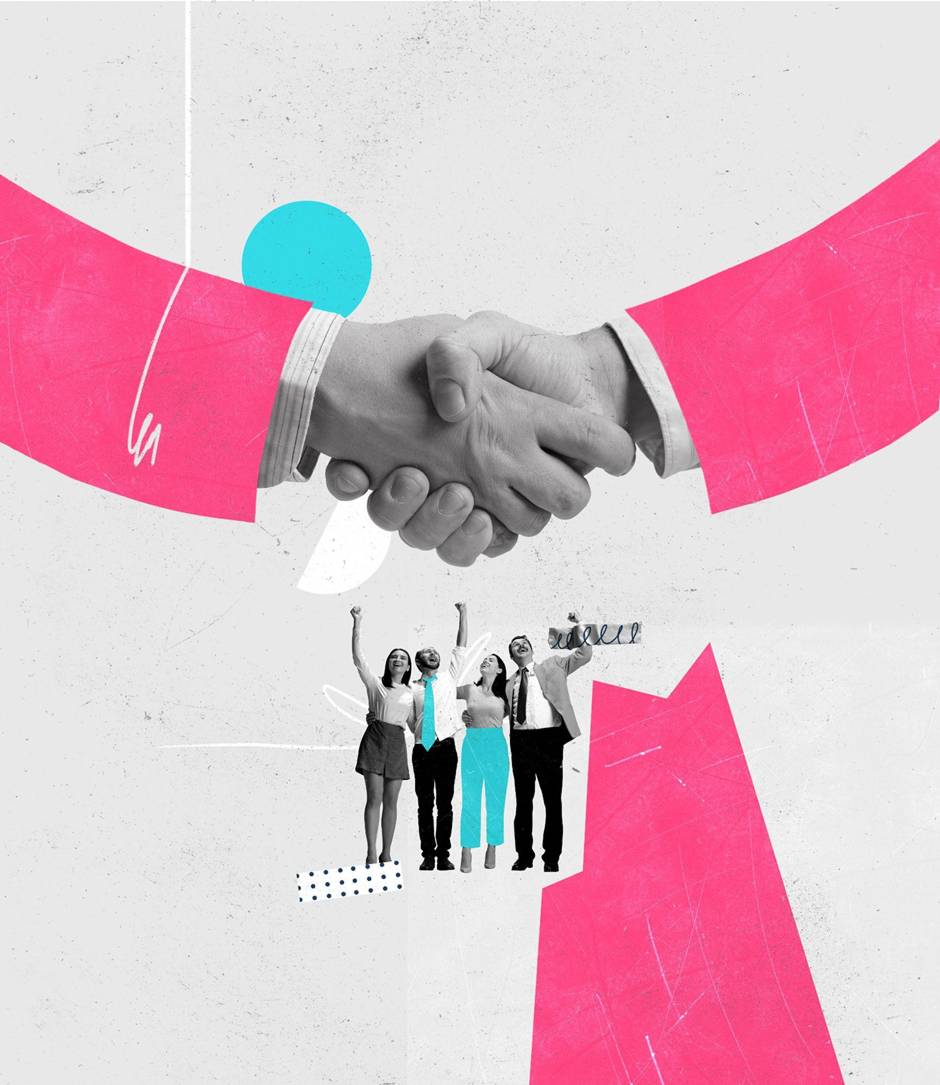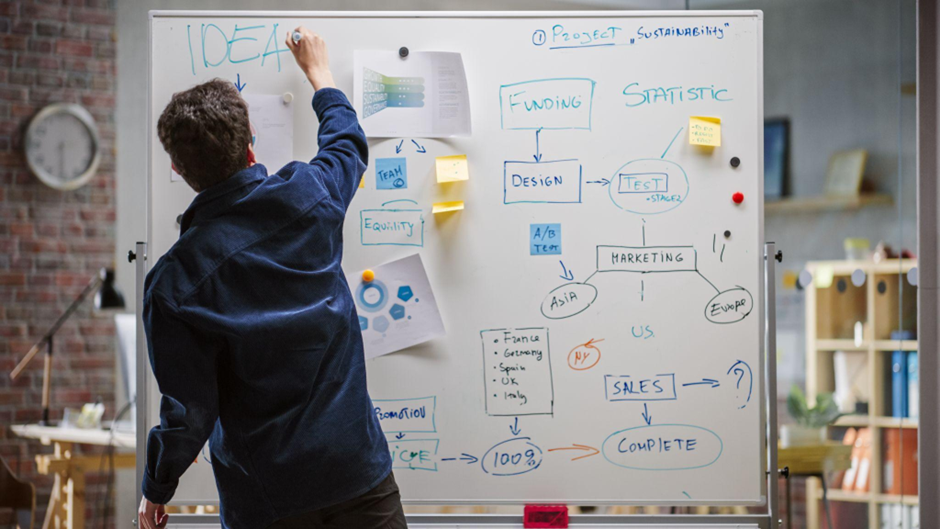Your product is your baby.
You’ve spent months, maybe years, living with this idea. Now, you’re at a crossroads. You know you need professional design to bring it to life, but the path forward is foggy. The thought of handing your vision over to an agency can feel like a mix of excitement and pure terror.
Will they get it? Will they care about the details as much as you do? Will this be worth the investment?
These are the right questions to be asking. Before we dive into the process, let's start with a surprising truth: design is not everything.
A brilliant design can't save a product nobody needs. But poor design will kill a brilliant product. The goal of a great design partnership isn't just to make things look pretty; it's to act as a strategic co-pilot, ensuring your brilliant idea gets the world-class execution it deserves.
But first, you have to choose your co-pilot.
The First Big Decision: In-house, Freelancer, or Agency?
For a founder, this is a major decision. You need design expertise, but which path is right for you when designing for a startup?
● In-house Designer: Amazing for long-term consistency, but comes with the high cost and commitment of a full-time salary.
● Freelancer: Flexible and often cost-effective for specific tasks, but you might have to juggle multiple freelancers for different skills (UX, UI, research) and manage the project yourself.
● Agency: Your end-to-end partner. You get a complete, structured UI/UX design process and a full team of experts for one price. It’s the best choice for founders who need a comprehensive solution without the overhead of building an in-house team.
.png)
The Partnership: It’s a Science, Not Just a Paint Job
If you decide that working with a design agency is the right path, it's crucial to understand one thing: your designer should enter the game from day one.
Hiring an agency isn’t like hiring someone to paint the walls after the house is built. It’s like bringing an architect in before you’ve even broken ground. Their first job isn't to talk about colors; it's to understand the very foundation of what you're trying to build.
This is because proper design is a science. It’s a methodical journey of reducing risk and making sure we’re building the right thing, for the right people.
.png)
Phase 1: The First Conversation (It’s Not About Colors)
Most founders walk into their first design discovery call ready to talk about features, pages, and how they want things to look. That's completely normal. But a great agency will gently steer the conversation to a place of deeper understanding.
Let me tell you a real story that happened just last week.
A passionate educator came to us, excited to build an online academy. His vision was big: a website, a native iOS app, and a native Android app, all based on a reference from a huge university. The easy path for us would have been to nod and start calculating a massive quote.
Instead, we put the brakes on. We knew our first job wasn't to be an order-taker, but a strategic partner. Our first questions had nothing to do with design trends:
● "What does real success look like for your academy one year from now?"
● "How will your students actually learn? What is the single most important action they need to take to feel engaged?"
● "What makes your teaching style unique, and how can we make the platform a reflection of you?"
Listening to his answers, we could see the cliff he was about to walk off. Building three separate platforms would be a financial nightmare for a new venture, draining his budget before he even had a chance to succeed.
So we pivoted the conversation. We walked him through the pros and cons and guided him to a smarter path: one world-class responsive web application that would work perfectly on all devices. You could feel the relief in the conversation. He didn't just get a potential quote; he got a strategic business plan that protected his investment and gave him a clear path to launch.
This is what to expect from a UX agency's first call. It should feel less like a sales pitch and more like your first strategy session. A true partner knows the first step in design isn't a pixel; it's a deep understanding of your "why."

Phase 2: From Blueprint to a Beautiful Home (The UX to UI Journey)
So, we've had our first strategic conversation. We agree on the "why." Now, how do we actually build your digital product?
Think of it like building a house.
First, We Create the Blueprint (This is UX Design)
Before any builder starts laying bricks, they need a blueprint from an architect. They need to know where the rooms go, where the doors are, and how you'll walk from the kitchen to the living room.
In the design world, our "blueprint" is called a wireframe.
It's intentionally simple—just grey boxes, lines, and plain text. We do this on purpose so we can focus on one single, critical question: Does the layout make sense? Is it easy for a user to find what they're looking for? Is the flow from one screen to the next logical and frustration-free?
At this stage, your job as the founder is to be the first person to walk through the "house." You're not looking at paint colors or furniture yet. You're just making sure the floor plan is solid.
Then, We Turn the House into a Home (This is UI Design)
This is the part everyone gets excited about. Once you've approved the blueprint (the wireframes), our "interior designers" come in to bring the soul and personality to your product. This is the UI (User Interface) phase.
It’s a process that has a few magical steps:
- Finding the Vibe: We start by talking about the feeling. Do you want your product to feel energetic and bold, or calm and trustworthy? We'll explore colors, fonts, and styles to find the perfect personality that matches your brand.
- Applying the "Coat of Paint": We then begin applying this style across all the "rooms." We choose an elegant, easy-to-read font, apply your brand's color palette, and design a custom set of icons. This creates a consistent and beautiful look and feel everywhere.
- Adding the "Magic Touches": This is where our "Gamification of Design" philosophy really shines. We focus on the tiny details that make a huge difference. What does a button do when you press it? How does a new screen animate into view? We design these satisfying little interactions—the "small victories"—that make using your product feel less like a chore and more like a pleasure.
This journey from a simple, logical blueprint to a beautiful, engaging final product is where the real magic of design happens. It’s a partnership that ensures your digital "home" is not only well-built but is also a place your users will love to be.

The Long Game: Why Great Design is a Journey, Not a Purchase

Some founders believe that design is a one-off purchase. You get your Figma file, and you're done. But that’s like saying a car never needs a tune-up.
The truth is, great design is not a one-off purchase; it's a journey. The launch of your product isn't the finish line; it's the starting line. The real magic happens when you get your design into the hands of real users and learn from their feedback through usability testing.
We once designed an interface for a complex, million-dollar piece of industrial machinery. The stakes were incredibly high. We didn't just design what we thought was best and hand it over. We built a fully interactive, clickable prototype and put it in a room with the actual engineers who would be using it under pressure.
Watching them interact with it was invaluable. We saw where they hesitated, where they got confused, where a button was just slightly out of reach. That real-world feedback led to critical improvements that made the machine safer and more efficient. The design wasn't "done" until it was proven to work in the hands of its users.
That's the ultimate goal. This iterative spirit is what allows us to create Timeless Digital Experiences—solutions that are built on a solid foundation but are flexible enough to evolve and improve with their users, year after year.
Struggling to find a design partner who sees the bigger picture? At Esox Studio, we believe in building great products and great partnerships. It all starts with a simple conversation.
If you're ready, let's schedule a free discovery call



